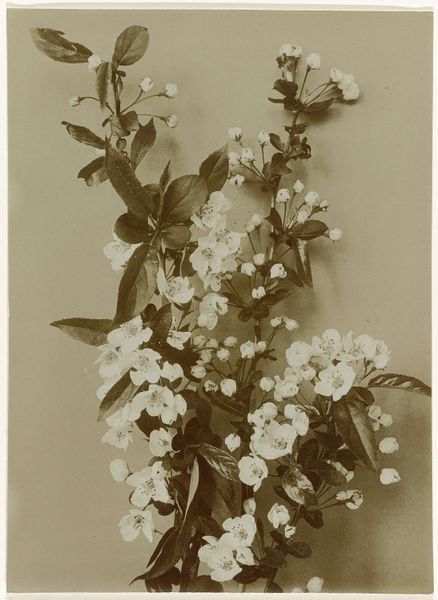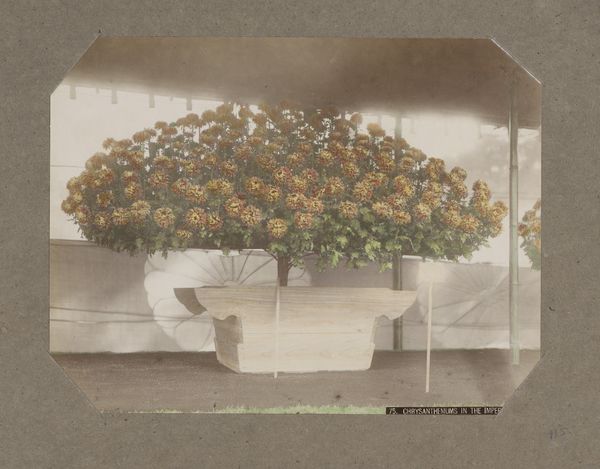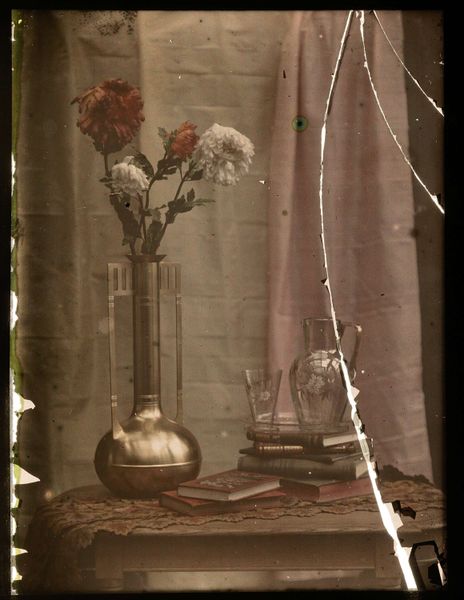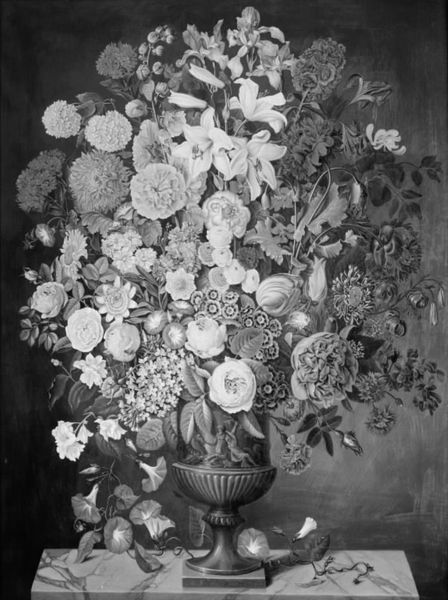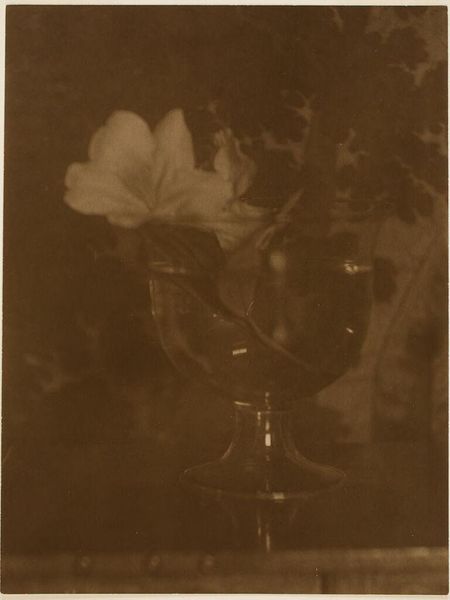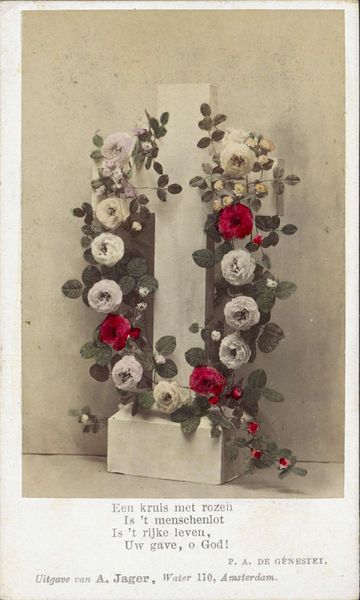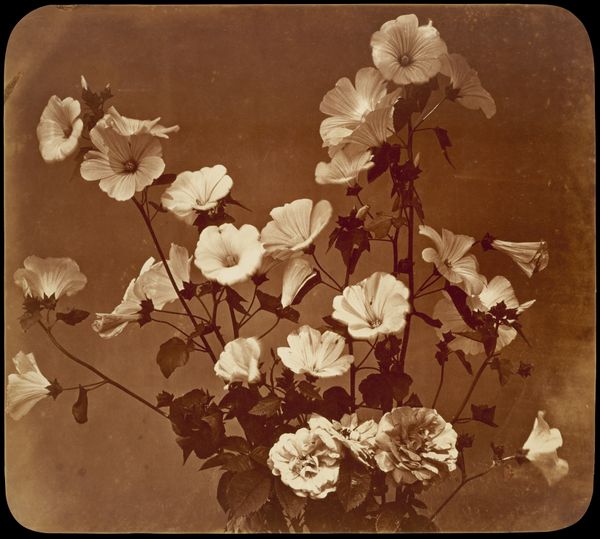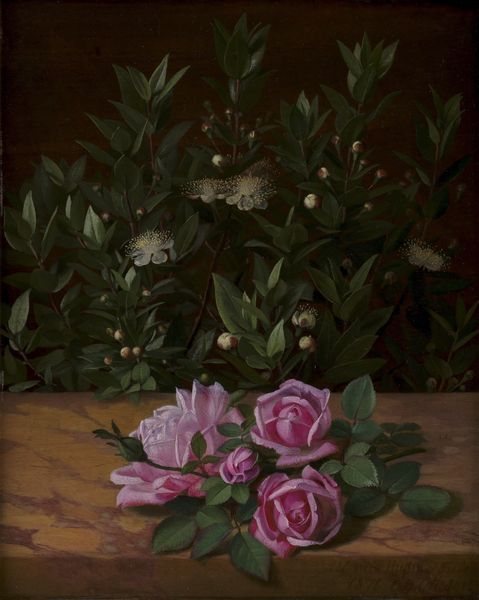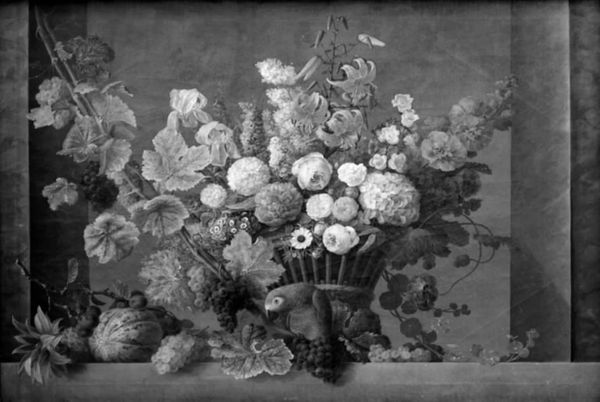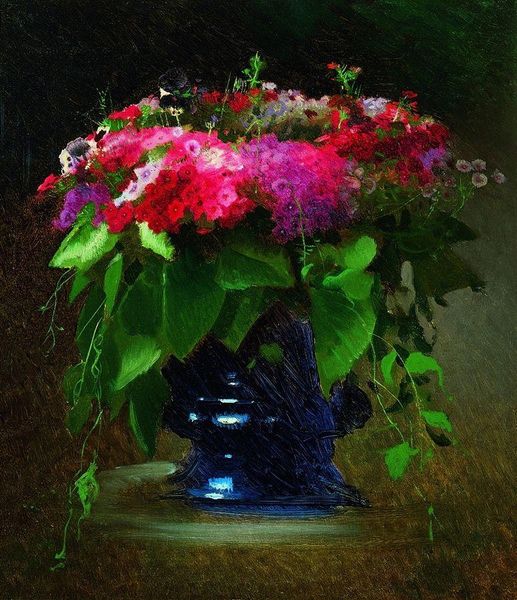
Bloeiende plant in een interieur, tegen de achtergrond van rood fluwelen stof 1907 - 1930
0:00
0:00
adolpheburdet
Rijksmuseum
Dimensions: height 89 mm, width 118 mm
Copyright: Rijks Museum: Open Domain
Curator: What immediately strikes me is the juxtaposition of textures—the velvety backdrop versus the delicate floral arrangement. It feels intentionally posed, almost theatrical. Editor: You’re quite right. This photograph, taken between 1907 and 1930 by Adolphe Burdet, is entitled “Bloeiende plant in een interieur, tegen de achtergrond van rood fluwelen stof,” which translates to "Flowering Plant in an Interior, Against a Red Velvet Fabric Background." Curator: The composition certainly leads the eye directly to the blooms, with the backdrop acting almost as a frame. I'm interested in the tonality—the stark contrast between the dark background and the pale blossoms. The framing accentuates this division. Editor: Indeed. This period witnessed the burgeoning middle class's desire to display newfound wealth and leisure. Interior photography was a means of legitimizing a specific cultural sphere, portraying bourgeois ideals and domestic comfort. Curator: I notice how the photographer uses the strong vertical of the decorative velvet fabric as an important element that divides and balances the image. Editor: Very astute, I believe the potted plant might speak to a new appreciation for bringing elements of nature inside as ornaments. Indoor plants signal control and domestication of nature within bourgeois lives. Curator: Absolutely. And it raises questions about how these kinds of interior representations reinforced gender roles and ideas about femininity tied to beauty and home life. Editor: Indeed, and further investigation would be required, looking at similar photos and cultural documentation from that time period. That deeper study, and more research of Burdet, are areas where we could explore additional detail. Curator: The formalism and its relationship with its societal context... It’s a constant interplay, isn't it? Fascinating!
Comments
No comments
Be the first to comment and join the conversation on the ultimate creative platform.

